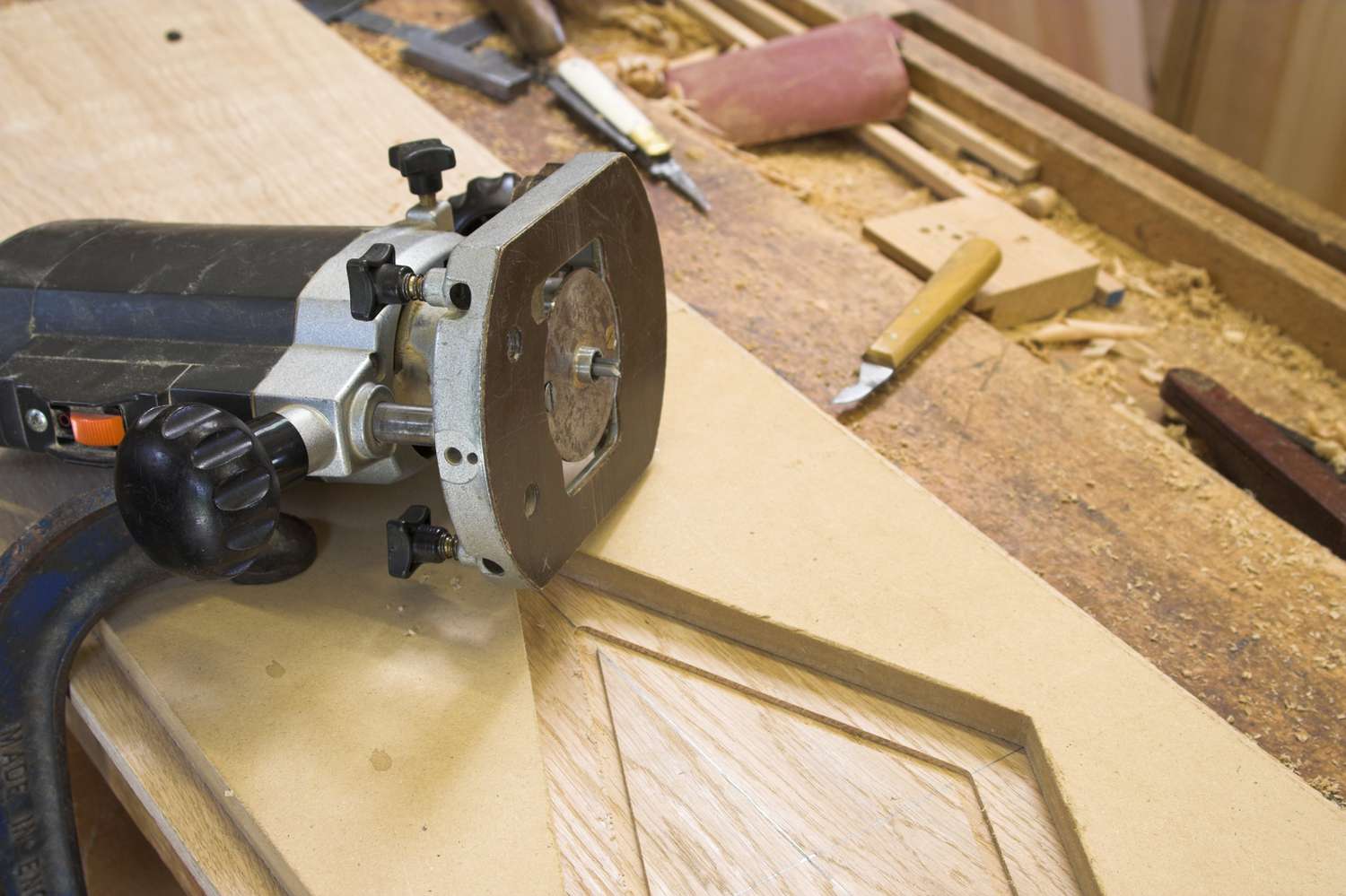Woodworking router bits serve as core tools in modern woodworking and furniture manufacturing, performing functions such as carving, cutting, trimming, shaping, and joinery. With the growth of the home, industrial, and craft sectors, the importance of high-performance router bits has become increasingly prominent. This article systematically analyzes the advantages of woodworking from aspects of performance, materials, craftsmanship, ease of use, and safety, providing a reference for the woodworking industry.
Material Advantages: Hardness and Durability Combined
The primary advantage of woodworking router bits comes from their high-performance materials. Common materials used in the market include high-speed steel (HSS), carbide, and titanium-coated materials. Each material exhibits unique benefits in woodworking:
| Material Type |
Hardness |
Service Life |
Suitable Applications |
Advantages |
| High-Speed Steel (HSS) |
Medium to high |
Medium |
Softwood, medium-hard wood |
Sharp cutting edge, moderate cost, easy to sharpen |
| Carbide |
High |
Long |
Hardwood, composite boards, plastics |
Wear-resistant, high cutting precision, long service life |
| Titanium Coating |
High + corrosion resistance |
Extra long |
All types of wood, especially high-strength materials |
Rust-proof, wear-resistant, smooth surface, reduced friction |
High-quality materials not only determine cutting performance and durability but also influence machining accuracy and the surface quality of finished wood pieces. Carbide and titanium-coated bits maintain stable cutting even in high-density wood, reduce the frequency of tool replacement, and improve production efficiency.
Cutting Performance: Balancing Precision and Efficiency
The cutting performance of bits is particularly noteworthy, as it ensures machining precision while significantly improving work efficiency. Key aspects include:
1.High-Speed Cutting Capability
High-quality bits, typically made from carbide or HSS, maintain sharpness under high-speed rotation. High-speed cutting allows rapid material removal, reduces friction and heat accumulation during machining, and minimizes the risk of wood deformation and tool wear. This feature is especially important for mass production or hardwood processing.
2.Versatile Cutting Functions
Depending on the bit design, a router bit can achieve straight grooves, V-grooves, round-over edges, chamfers, rabbets, and decorative lines. A single bit can perform multiple functions, meeting the needs of furniture shaping, wood carving, and industrial part processing. For example, round-over bits handle edges, straight bits cut joinery, and template bits accurately replicate patterns for complex designs.
3.Enhanced Machining Accuracy
Premium bits are precisely engineered with optimal cutting angles to reduce wood tear-out, edge chipping, or burrs, producing smooth and neat cuts. In precision woodworking projects, such as furniture joints or crafts, cutting accuracy directly affects structural strength and appearance. High-precision bits ensure each cut meets design specifications, reducing rework.
4.Improved Work Efficiency
Excellent cutting performance allows more material to be processed per unit of time, lowers cutting resistance, and reduces operational difficulty. Multi-functional bit designs also minimize the need for frequent tool changes, increasing production efficiency. In industrial or batch furniture production, efficient cutting bits can significantly reduce manufacturing costs.
5.Reduced Material Damage
Sharp cutting edges and well-designed angles help minimize wood fiber tearing, protecting surface quality. This advantage not only enhances product aesthetics but also reduces material waste, improving economic efficiency.
Summary:
Cutting performance is a core advantage of woodworking. It determines machining efficiency and directly impacts product precision and material utilization. By selecting suitable bit materials, blade designs, and specifications, it is possible to achieve high accuracy while significantly improving cutting speed, providing stable and efficient production support for woodworking projects.
Structural and Design Advantages: Diversity and Flexibility
The advantages of bits in terms of structure and design lie in their diversity and flexibility. This not only meets the needs of different woodworking projects but also improves processing efficiency and the aesthetics of finished products. A well-designed structure ensures tool stability during operation while adapting to various wood types and cutting techniques.

1.Diverse Bit Types
According to processing functions and shape requirements, woodworking can be divided into several types, each designed for specific applications:
| Bit Type |
Main Use |
Design Advantage |
| Straight Bit |
Cutting straight grooves, joinery |
Stable cutting edge, high precision, suitable for mortise and tenon work |
| Round-over Bit |
Edge rounding, decorative edges |
Provides smooth curved edges, enhances aesthetics and tactile feel |
| Chamfer Bit |
Chamfering, angled cuts |
Precise angled cuts, improves structural harmony |
| Template Bit |
Template copying, complex patterns |
Accurately replicates template shapes, ideal for custom designs |
| Rabbet Bit |
Mortise and tenon, joining grooves |
Controllable cutting depth, ensures structural stability |
| V-Groove Bit |
Decorative line carving |
Suitable for intricate decorative work, enhances craftsmanship |
Such diverse designs allow woodworkers to quickly switch bits according to different needs, achieving full-process machining from basic cutting to fine carving.
2.Flexible Sizes and Cutting Depths
Router bits come in various diameters, cutting edge lengths, and cutting depths. Different sizes accommodate wood of varying thickness and density, allowing for precise machining. For instance, small-diameter bits are ideal for detailed work and carving, while larger-diameter bits are suitable for deep grooves or large-area cuts, improving efficiency.
3.Matching Blade Shapes to Applications
The shape of the cutting edge directly affects the cutting outcome. Straight bits have sharp, even edges suitable for linear cuts; round-over bits feature curved edges to reduce chipping; V-groove and template bits are designed for decorative lines and complex pattern replication. Choosing the appropriate blade shape ensures precision while improving surface quality and the visual appeal of the finished product.
4.Enhanced Operational Flexibility
Router bits with well-designed structures are compatible with handheld routers, table routers, or CNC machines, meeting diverse machining environment requirements. Multi-functional bit designs also reduce frequent bit changes, simplifying operation and improving overall processing efficiency.
Summary:
Structural and design advantages make bits highly diverse and flexible in machining. By selecting suitable bit types, sizes, blade shapes, and functions, woodworkers can achieve precise cutting, shaping, and decorative work on various wood types, significantly improving efficiency and product quality.
Durability and Maintenance Advantages
Woodworking not only excel in cutting performance and structural design but also in durability and ease of maintenance. These features ensure that bits operate stably under high-intensity processing conditions while reducing production costs.
High-Hardness Cutting Edges for Long Lifespan
Router bits are usually made from high-speed steel (HSS), carbide, or titanium-coated materials. These high-performance materials offer:
Wear resistance: Retains sharp edges even when processing hardwood, composite boards, or high-density fiberboard.
High-temperature resistance: Frictional heat from high-speed cutting does not significantly affect tool performance, avoiding deformation or chipping.
Corrosion resistance: Titanium-coated bits are rustproof and corrosion-resistant, suitable for long-term use.
These high-hardness materials ensure stable performance during frequent cutting and complex operations, extending tool lifespan.
Easy Maintenance and Sharpening
Despite their durability, bits inevitably dull after prolonged use. Thanks to well-designed edges and high-quality materials, router bits are easy to maintain:
Sharpenable: HSS and carbide bits can be restored to sharpness using professional sharpening equipment.
Regular cleaning: Removing wood chips and dust, and keeping bits dry, prevents dulling and rust.
Edge integrity checks: Regularly inspect for wear or micro-cracks and replace or sharpen as needed to ensure precision and safety.
Scientific maintenance management allows even frequently used bits to retain stable cutting performance over time.
Long-Term Stability
Durable bits not only maintain sharpness but also stability over extended use:
Reduced replacement frequency: High-wear-resistant bits minimize the need for frequent changes, improving production continuity.
Maintained machining accuracy: Even after long-term use, bits preserve original dimensions and cutting profiles, ensuring precision.
Cost savings: Durable bits reduce procurement and maintenance expenses while minimizing downtime, enhancing overall productivity.
Adaptability to Various Wood Types
High-durability bits are suitable for softwood, hardwood, composite boards, and high-density fiberboard. Whether for everyday furniture production or intricate crafts, the bits maintain good cutting conditions, ensuring smooth surfaces.
Summary:
Durability and maintenance advantages enable bits to perform efficiently, precisely, and stably in high-intensity processing environments. Selecting high-performance materials and performing proper maintenance extends tool life and boosts production efficiency, providing reliable support for the woodworking industry.
Safety and Operational Advantages
Woodworking not only excel in cutting performance, structural design, and durability, but also demonstrate significant advantages in safety and operational convenience. These features not only enhance production efficiency but also reduce workplace injury risks, providing reliable support for woodworking operations.
Stable Tool Structure Reduces Operational Risks
High-quality router bits are precisely engineered, with tight connections between the shank and bit body, ensuring balanced rotation. During high-speed cutting, minimal vibration reduces tool deviation and accidental jumps, lowering operational hazards. A stable structure ensures both safety during machining and consistent product quality.
Ergonomic Design
Modern router bits consider ergonomics for handheld operations. Proper bit length, grip design, and cutting head configuration make operation comfortable and reduce fatigue during extended use. User-friendly design also helps beginners or less experienced operators maintain stable cutting, decreasing accident risks.
High Visibility and Ease of Use
Some router bits are equipped with guide sleeves or depth stops, enabling precise control over cutting depth and path. This design ensures accuracy while allowing operators to clearly observe the process, preventing overly deep or off-track cuts and enhancing safety.
Quick Installation and Replacement
Router bits often support fast installation and removal, compatible with standardized collets or CNC interfaces. Quick bit changes reduce prolonged contact with rotating parts, lowering accidental injury risks while improving work efficiency.
Reducing Hazards from Material Damage
Proper bit design and cutting parameters minimize wood tear-out, edge chipping, and burr formation, reducing flying debris that could harm hands or eyes. Stable cutting not only improves product quality but also enhances overall processing safety.
Safe Operating Recommendations
Even with high-performance bits, correct operation is crucial:
Use protective gear, such as goggles and gloves.
Follow recommended speeds and cutting depths.
Avoid adjusting the workpiece or placing hands near the cutting edge while the bit is rotating.
Regularly inspect bits for wear or damage and replace them promptly if issues arise.
Summary:
Safety and operational advantages make woodworking router bits not only efficient and durable but also easy to control. Stable structure, ergonomic design, and guiding features collectively reduce operational risks, ensuring safer woodworking processes and providing sustainable, secure machining solutions.
Applications in Medical, Furniture, and Industrial Fields
Woodworking router bits are widely used not only in furniture making and home renovations but also in industrial and medical wood component processing.
| Application Area |
Specific Use |
Advantage |
| Furniture Manufacturing |
Tables, chairs, cabinets, decorative lines |
High-precision cutting, reduces surface defects |
| Woodcraft |
Carvings, models, custom decorations |
High flexibility, enables complex shapes |
| Industrial Manufacturing |
Wooden molds, machinery components |
Improves processing efficiency, ensures structural accuracy |
| Medical Equipment |
Wooden auxiliary tools, components |
Wear-resistant, ensures hygienic processing environments |
By selecting appropriate bit specifications and materials, router bits can cover the full range from softwood to hardwood, from straight cuts to intricate pattern carving.
Woodworking with their durability, cutting performance, structural flexibility, maintenance convenience, safety, and wide applicability, have become indispensable core tools in modern woodworking and industrial production. Through proper selection and scientific usage, router bits enhance efficiency, product quality, extend tool and material life, reduce production costs, and deliver significant value to woodworking and industrial manufacturing.
Looking ahead, with advancements in material science and CNC technology, woodworking router bits will continue to play a key role in high-precision, high-efficiency, and diversified applications, meeting the evolving needs of the market.








